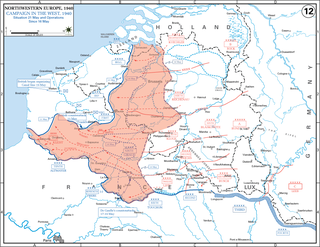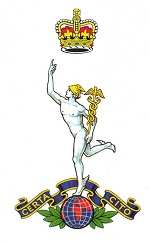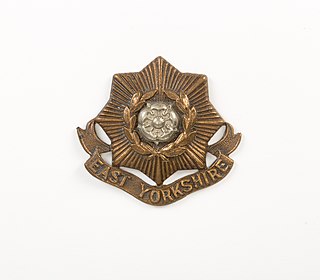
The Battle of Gazala, also the Gazala Offensive was fought near the village of Gazala during the Western Desert Campaign of the Second World War, west of the port of Tobruk in Libya, from 26 May to 21 June 1942. Axis troops of the Panzerarmee Afrika consisting of German and Italian units fought the British Eighth Army composed mainly of British Commonwealth, Indian and Free French troops.

The Battle of Arras took place on 21 May 1940, during the Battle of France in the Second World War. Following the German invasion of the Low Countries on 10 May, French and British forces advanced into Belgium. The German campaign plan Fall Gelb had evolved into a decoy operation in the Netherlands and Belgium, with the main effort through the Ardennes. German units crossed the Meuse without waiting for reinforcements at the Battle of Sedan. Instead of consolidating bridgeheads on the west bank of the Meuse, the Germans began an advance down the Somme river valley towards the English Channel.

The 50th (Northumbrian) Infantry Division was an infantry division of the British Army that saw distinguished service in the Second World War. Pre-war, the division was part of the Territorial Army (TA) and the two Ts in the divisional insignia represent the two main rivers of its recruitment area, namely the rivers Tyne, and Tees. The division served in almost all of the major engagements of the European War from 1940 until late 1944 and also served with distinction in North Africa, the Mediterranean and Middle East from mid-1941 to 1943. The 50th Division was one of two British divisions to land in Normandy on D-Day, 6 June 1944, where it landed on Gold Beach. Four men of the division were awarded the Victoria Cross during the war, more than any other division of the British Army during the Second World War.

The 22nd Armoured Brigade was an armoured brigade of the British Army that saw service during and after the Second World War. The brigade was formed on the outbreak of war on 3 September 1939 from Territorial Army (TA) armoured regiments. It saw a considerable amount of action during the war, beginning with the Western Desert Campaign where it was engaged in Operation Crusader and at the Battles of Gazala, Mersa Matruh, First Alamein and Alam el Halfa. It then joined the 7th Armoured Division for the Second Battle of El Alamein. It remained part of 7th Armoured for the rest of the war, including the campaigns in Tunisia, Italy and North West Europe. It continued in the postwar TA until 1956. The brigade's identity was re-established in the Regular Army between 1981 and 1993.
The 151st Infantry Brigade was an infantry brigade of the British Army that saw active service during the Second World War in Belgium and France in 1940, and later in North Africa, Tunisia and Sicily, and later in Normandy in mid-1944 and North-western Europe. The brigade was part of the 50th (Northumbrian) Infantry Division, and for most of its wartime existence consisted of three battalions of the Durham Light Infantry (DLI) the 6th, 8th and 9th.
The 69th Infantry Brigade was an infantry brigade of the British Army in the Second World War. It was a second-line Territorial Army formation, and fought in the Battle of France with the 23rd (Northumbrian) Division. The brigade was later part of the 50th (Northumbrian) Infantry Division. It went on to fight in the North African campaign, the Allied invasion of Sicily, the Normandy landings and the North West Europe campaign.

The 23rd (Northumbrian) Division was an infantry division of the British Army, which fought briefly in the Battle of France during the Second World War. In March 1939, after the re-emergence of Germany as a European power and its occupation of Czechoslovakia, the British Army increased the number of divisions within the Territorial Army by duplicating existing units. The 23rd (Northumbrian) Division was formed in October 1939, as a second-line duplicate of the 50th (Northumbrian) Motor Division. It was made up of two brigades, unlike regular infantry divisions that were composed of three, with battalions hailing from the north of England.

The Norfolk Yeomanry was a volunteer cavalry (Yeomanry) regiment of Britain's Territorial Army accepted onto the establishment of the British Army in 1794. After seeing action in the Second Boer War, it served dismounted at Gallipoli, in Palestine and on the Western Front during the First World War. Between the wars it converted to the Royal Artillery (TA), and served as an anti-tank regiment in France, the Western Desert, Italy and North West Europe during the Second World War. After the war it served as a TA air defence unit and then as an Army Air Corps unit.
The 1st Newcastle Engineer Volunteers, later Northumbrian Divisional Engineers, was a Royal Engineer (RE) unit of Britain's Volunteer Force and Territorial Army founded in 1860. Its companies saw action in both World Wars, particularly at the Battle of Rosières and the assault crossing of the River Selle in 1918, and on D-Day in 1944. Its successors continue to serve in today's Army Reserve.

The 2nd Cinque Ports Artillery Volunteers was a part-time unit of the British Army's Royal Artillery from 1890 to 1955. Raised as coastal defence artillery, it later served as field artillery in Mesopotamia during the First World War and in the Battle of France and Second Battle of El Alamein during the Second World War. Its successor units later operated as medium artillery in North West Europe, and as jungle artillery in Burma. Postwar, it became an anti-aircraft unit.
The 1st Durham Rifle Volunteers, later the 5th Battalion, Durham Light Infantry, was a part-time unit of the British Army from 1860 to the 1950s. Beginning from small independent corps of the Volunteer Force recruited in County Durham and Teesside, it became part of the Territorial Force and served as infantry in some of the bloodiest actions of the First World War. Later it was converted to anti-aircraft units that served during the Second World War both in Home Defence and in North-West Europe. Its successor units continued in the air defence role in the postwar Territorial Army until 1975.
4th Anti-Aircraft Brigade was an air defence formation of the British Army during the Second World War. It was formed just before the Battle of France to protect the British Expeditionary Force's bases. After the Dunkirk evacuation it was reformed in Egypt as a mobile formation with the Western Desert Force. It played a distinguished part in the Defence of Tobruk in 1941, but its headquarters was captured in the Fall of Tobruk the following year. It was reconstituted as a training formation in Persia and Iraq Command for the rest of the war.
The 1st Forfarshire Artillery Volunteers was a part-time unit of the British Army's Royal Artillery founded in Forfarshire in Scotland in 1859. It served with 51st (Highland) Division through many of the major battles on the Western Front during the First World War. In the Second World War, its regiments saw action in the Battle of France, in the campaigns in North Africa and Sicily, and in North West Europe from D-Day to VE Day. It continued in the postwar Territorial Army until 1975.
The 1st Renfrew and Dumbarton Artillery Volunteers was a part-time unit of the British Army's Royal Artillery founded in Scotland in 1860. During the First World War, it served with 51st (Highland) Division at the Battle of the Somme before being broken up. In the Second World War, the regiment saw action in the Battle of France, in the campaigns in North Africa, Sicily, Italy, the Greek Civil War and in North West Europe. It continued in the postwar Territorial Army until 1969.

44 Signal Regiment was a Territorial Army (TA) unit of the British Army's Royal Corps of Signals. It had its origins in a Volunteer unit of the Royal Engineers (RE) formed in the 1890s. It provided the divisional signals for the 44th Division and its duplicates in both World Wars, also seeing active service with 28th Division in the First World War. Its successor continued in the postwar TA and Army Reserve.

50 (Northumbrian) Signal Regiment was a Territorial Army (TA) unit of the British Army's Royal Corps of Signals. It had its origins in a signal company and a cyclist battalion formed in 1908 and it provided the divisional signals for the 50th (Northumbrian) Division and its duplicates during World War II. Its successors continued in the postwar TA until 2009.

25th Light Anti-Aircraft Regiment, Royal Artillery was an air defence unit of Britain's Territorial Army (TA) formed in Liverpool just before the outbreak of World War II. It saw active service in the Western Desert Campaign, losing a battery at the Battle of Gazala, and then joined 50th (Northumbrian) Infantry Division for the assault landings in Sicily and Normandy. It ended the war with 53rd (Welsh) Infantry Division in Germany, and was reformed in the postwar TA, eventually merging with other Liverpool units.

The Hull Rifles, later the 4th Battalion, East Yorkshire Regiment, was a unit of Britain's Volunteer Force first raised in Kingston upon Hull in 1859. During the First World War it served on the Western front, seeing a great deal of action at Ypres, the Somme, Arras, and in the German spring offensive, when it was virtually destroyed. Its 2nd Line battalion garrisoned Bermuda for much of the war. During the Second World War the 4th Battalion was captured at the Battle of Gazala, but its wartime duplicate unit fought on through the Western Desert, Tunisia and Sicily, and then landed in Normandy on D Day. The battalion served in the postwar Territorial Army until 1960, and its successors in today's Army Reserve continue in Hull.
The 1st Flintshire Rifle Volunteers, later 5th (Flintshire) Battalion, Royal Welch Fusiliers, was a Welsh unit of the British Army's auxiliary forces. First raised in 1860, it fought as infantry at Gallipoli), in Egypt and Palestine during the First World War. Converted to the anti-tank role, it fought in the Battle of France, the Western Desert and Italy in the Second World War. It continued in the postwar Territorial Army until amalgamated with a neighbouring unit in 1956.

61st Light Anti-Aircraft Regiment was an air defence unit of Britain's Royal Artillery formed during the Second World War. Its component Territorial Army batteries, both from London, had already seen action in the Battle of France before the regiment was formed in 1940. It went on to serve with armoured formations in the Western Desert Campaign, including the Battle of Gazala. It was broken up in the Middle East in 1944 to provide infantry reinforcements for the Italian Campaign.











